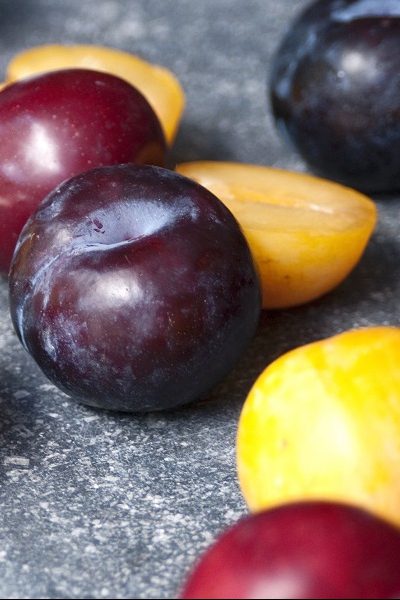 Botanical name: Prunus section Prunus
Botanical name: Prunus section Prunus
Crown and root system: This is a deciduous tree with lovely flowers, a small-medium round crown, and a non-invasive root system..
Growing regions: Our nursery sells varieties that are suited to the center of the country and require a few doses of cold weather in order to yield fruit.
Ripening date: Summer months, according to the variety.
Planting in a container: May be planted in a container. It may also be grown on a roof because in winter, when the wind is strong, the tree is dormant.
Recommended planting season: All year round.
Special care: As with most summer fruit trees the plum tree is also a preferred target for birds and fruit flies. The flies can be neutralized almost completely using a designated fly trap placed on one of the branches. The trap is safe and easy to use. Another way to protect the fruit from flies and birds is to use special netting sold in agricultural supply stores.
Varieties sold in our nursery:
“Metal” plum: This is a round and small red fruit that ripens at the beginning of the season, with a sweet flavor.
Sun gold: Yellowish-greenish medium-sized fruit that ripens at the beginning of August.
Santa Rosa: This fruit has a dark red peel with yellow flesh, ripens at the end of June, has low cold snap requirements.
Classic: Large green fruit with a hard peel.
Cherry plum: The tree has purple leaves, it is a commonly used as an ornamental tree. It requires numerous cold snaps in order to yield fruit, which are red, round and sweet.
Sagiv: This is an elongated purple fruit with pointed ends, requiring numerous cold snaps to yield fruit.
Good to know:
There are more than 200 different varieties of plums that grow on all continents around the world – except in Antarctica.

